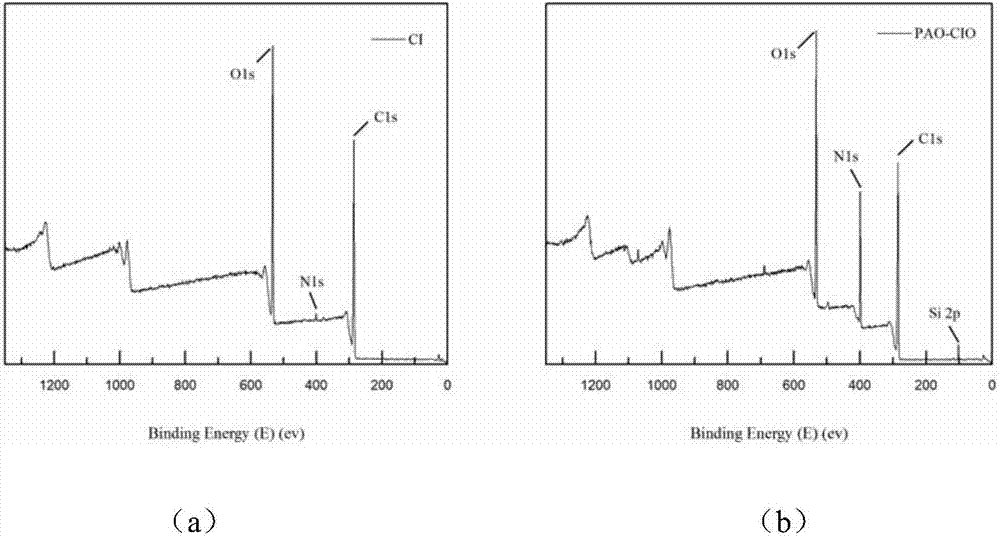Preparation method and application of a vascular plant-based porous oxidative polymeric chelate adsorption material
A technology of oxidative polymerization and chelation adsorption, applied in chemical instruments and methods, adsorption of water/sewage treatment, water pollutants, etc. Good hydrophilic effect
- Summary
- Abstract
- Description
- Claims
- Application Information
AI Technical Summary
Problems solved by technology
Method used
Image
Examples
Embodiment 1
[0056] (1) Pretreatment of ferns: fresh ferns were first rinsed twice with tap water, then rinsed three times with deionized water, and then rinsed twice with deionized water. Dry the ferns at 65°C, grind them through a 100-mesh sieve with a plant breaker, and store them in ziplock bags.
[0057] (2) Oxidation treatment of ferns: take an appropriate amount of ground ferns and mix them evenly with an oxidant, adjust the pH of the solution to a range of 1.0 to 6.5 with acid and alkali, and put it in a constant temperature water bath at 45°C under a nitrogen atmosphere to stir and react After 8 hours, filter, wash and dry after the reaction. Take 3.0g of the dried sample and add it to 100mL acetic acid-sodium acetate buffer solution with pH=5.5, then add 3.0g sodium chlorite and 5.0mL hydrogen peroxide, react at 20°C for 24 hours, filter, wash and dry, The oxidized plant product CIO is produced.
[0058] (3) Surface grafting modification: Take 10.0 g of oxidized plant CI and ad...
Embodiment 2
[0069] Preparation of oxidative polymeric chelation adsorption materials using nut shells (walnut shells, etc.) and their arsenic adsorption behavior:
[0070] (1) Pretreatment of walnut shells: fresh walnut shells are first rinsed twice with tap water, then rinsed three times with deionized water, and then rinsed twice with deionized water. Dry the walnut shells at 65°C, grind them through a 100-mesh sieve with a plant crusher, and store them in ziplock bags.
[0071] (2) Oxidation treatment of walnut shells: Take an appropriate amount of ground walnut shells and mix them evenly with an oxidizing agent, adjust the pH of the solution to 1.0-6.5 with acid and alkali, and put it in a constant temperature water bath at 45°C under a nitrogen atmosphere and stir for 8 hours. After the reaction, filter, wash and dry. Take 3.0 g of the dried sample and add it to 100 mL of acetic acid-sodium acetate buffer solution with pH=5.5, then add 3.0 g of sodium chlorite and 5.0 mL of hydrogen...
PUM
| Property | Measurement | Unit |
|---|---|---|
| adsorption capacity | aaaaa | aaaaa |
| adsorption capacity | aaaaa | aaaaa |
| adsorption capacity | aaaaa | aaaaa |
Abstract
Description
Claims
Application Information
 Login to View More
Login to View More - R&D
- Intellectual Property
- Life Sciences
- Materials
- Tech Scout
- Unparalleled Data Quality
- Higher Quality Content
- 60% Fewer Hallucinations
Browse by: Latest US Patents, China's latest patents, Technical Efficacy Thesaurus, Application Domain, Technology Topic, Popular Technical Reports.
© 2025 PatSnap. All rights reserved.Legal|Privacy policy|Modern Slavery Act Transparency Statement|Sitemap|About US| Contact US: help@patsnap.com



